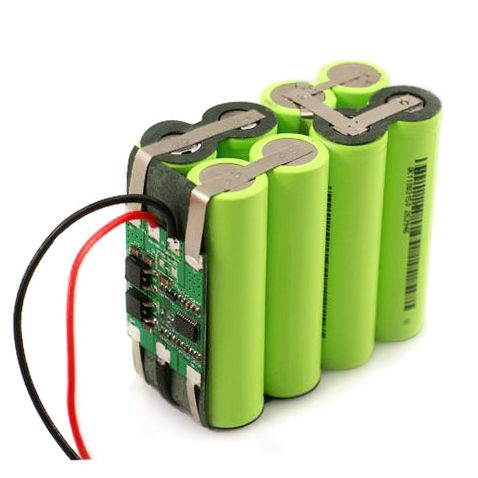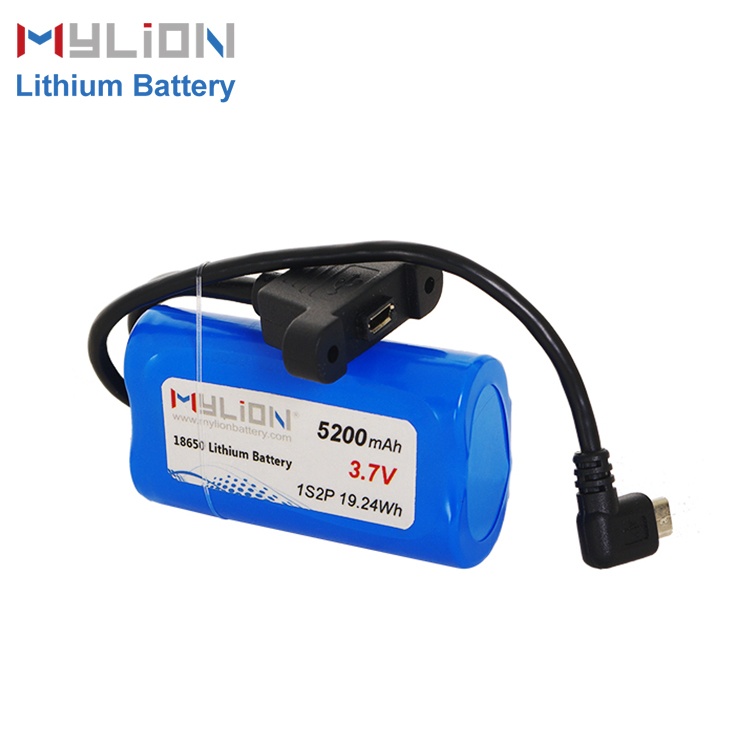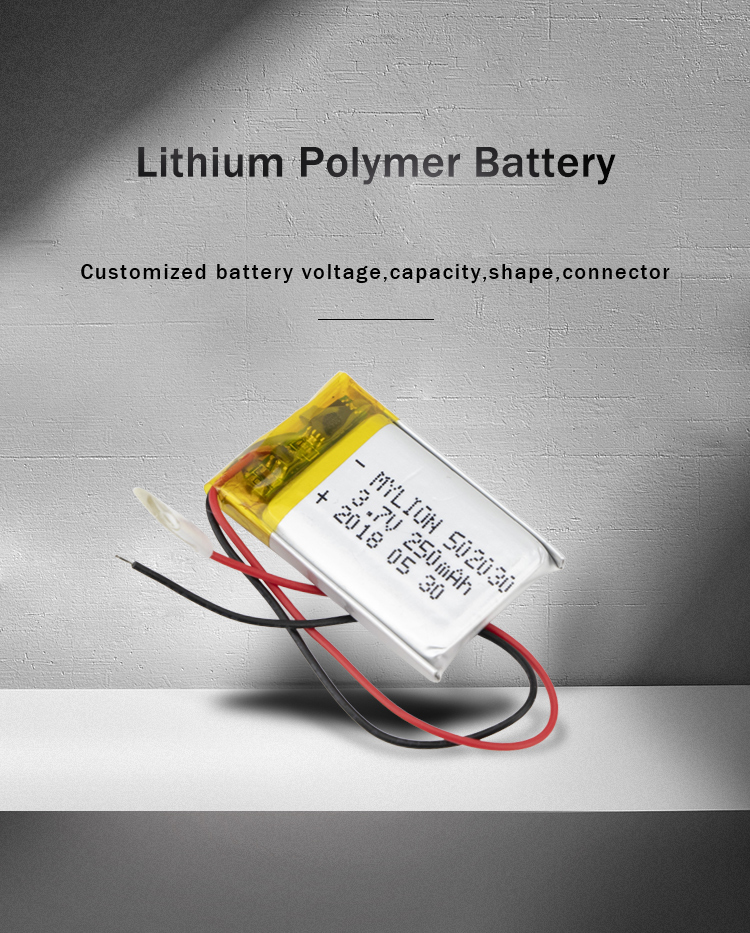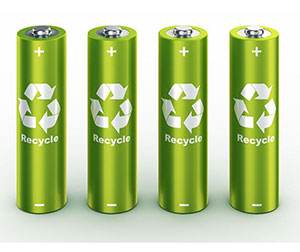
Overview of ternary lithium battery
There are many kinds of cathode materials for lithium-ion batteries. According to different cathode materials, they can be divided into lithium cobalt oxide, lithium manganate, ternary materials, lithium iron phosphate and lithium titanate. Ternary lithium battery refers to a lithium battery that uses three transition metal oxides of nickel, cobalt and manganese as positive electrode materials. Because it combines the advantages of lithium cobalt oxide, lithium nickel oxide and lithium manganate, its performance is better than the above Any single component cathode material. The experimental analysis shows that the three elements with different valences form a superlattice structure, and there is an obvious synergistic effect between the three components, which makes the material more stable, and the discharge platform is as high as 3.6V, so it is considered to be the most promising. One of the positive electrode materials. Ternary batteries have excellent electrochemical properties such as high energy density, good safety and stability, support for high-rate discharge, etc., as well as a moderate cost advantage. It has been widely used, and has shown strong development potential in the field of power lithium batteries such as intelligent robots, AGV logistics vehicles, drones and new energy vehicles.
At present, the research on ternary materials mainly focuses on the preparation of precursors, the synthesis of materials, and the relationship between electrochemical performance and structure. Most of the transition metal elements Ni, Co, and Mn in this material exist in the valence states of +2, +3, and +4, respectively. During the charging and discharging process, only Ni2+/Ni4+ and Co3+/Co4+ react, and Mn basically does not react. Participating in electrochemical reactions only plays a role in stabilizing the material structure. Regarding the preparation method, the commonly used synthetic methods in the industry include: high temperature solid phase method, co-precipitation method, sol-gel method, hydrothermal synthesis method, combustion method and the like. Ternary material is a lithium battery cathode material with excellent comprehensive performance. By changing the molar ratio of the three materials within a certain range, and adding corresponding additives (binder, conductive agent, current collector, etc.), it can be obtained in a certain range. On the one hand, it has outstanding performance characteristics, such as power ternary lithium battery, capacity ternary lithium battery, ultra-low temperature ternary lithium battery and so on.
Ternary polymer lithium battery
Ternary polymer lithium battery refers to a lithium battery with a ternary positive electrode material using nickel cobalt lithium manganate (Li(NiCoMn)O2) and a gel polymer electrolyte. As a transport medium for ion movement, electrolyte is generally composed of solvent and lithium salt. The electrolyte of lithium secondary battery mainly includes liquid electrolyte, ionic liquid electrolyte, solid polymer electrolyte and gel polymer electrolyte. Gel polymer electrolytes consist of polymers, organic solvents, and lithium salts, and are prepared by mixing organic electrolytes and solid polymer matrices. Because it exists in the form of gel, it has the advantages of both solid electrolyte and liquid electrolyte. Since the electrolyte is confined in the polymer chain, it also has high ionic conductivity (up to 10%) in a wide temperature range. -3S/cm). Its biggest advantage is the high mechanical strength of the membrane, and the film provides a large surface area. The thinner the film, the higher the energy density because more active species can be embedded in the battery. In addition, its electrochemical stability is also very good, and it is resistant to high temperature. Most of the high-temperature batteries on the market use polymer electrolytes.
Ternary power lithium battery
The so-called power battery means that the battery supports high-rate and high-current discharge, has high power density, and releases more energy per unit time. Rate discharge capability refers to the ability to maintain battery capacity when the charge and discharge rate increases. The rate of charge and discharge is represented by xC, 1C means that the nominal capacity of the battery can be used up in 1h, while the rate of discharge at 2C can be used for 30min.
The power/rate performance of a battery is closely related to the battery design and is affected by many factors, such as electrolyte, separator, type of active material, size of active particles, etc. Among these factors, the thickness of the electrode is the main factor affecting the high current discharge capability. The rate discharge capability can be greatly improved by making the electrodes thinner, as thin electrodes have less electronic and ionic impedance inside them, however thinning electrodes results in less active material mass inside the electrodes and thus a reduction in battery capacity. Therefore, the main technical challenge of the ternary power lithium battery is to increase the high current discharge capacity without reducing the capacity.
For the ternary power lithium battery, the one with the most research and the most mature technology is Japan’s Panasonic Corporation. The 30C discharge can already be achieved in the experimental stage, and the discharge rate of the power 18650 ternary lithium battery has been successfully commercialized and mass-produced. Up to 12C, the capacity is also up to 3300mAh. There are also domestic manufacturers to achieve a higher discharge rate, but the stability of the battery needs to be improved, especially after a period of use, its cycle life and rate discharge capacity will be greatly reduced. It has been reported that the rate performance of lithium batteries can be improved by methods such as particle coating and modification.
Ternary low temperature lithium battery
The temperature characteristic of the battery is an indicator of battery reliability, and the performance of the battery can also be evaluated by changing the ambient temperature. The low-temperature characteristics of lithium batteries are mainly investigated from the low-temperature discharge characteristics and cycle life. The most important thing for low-temperature batteries is to maintain the fluidity of materials under low temperature conditions, so that lithium ions can freely shuttle between the positive and negative electrodes to realize the charging and discharging of the battery. For example, using an electrolyte with a low melting point and reducing the particle size of the active material will enhance the low-temperature performance of the battery. This is because the increase in the channel of lithium ions makes up for the slow movement of lithium ions at low temperatures to a certain extent.
At present, ternary lithium battery manufacturers at home and abroad can basically achieve a discharge temperature of -20 degrees, and the discharge capacity is greater than 50%, and the cycle life is about 400 times, which can fully meet the needs of ordinary electrical appliances and power consumption scenarios. However, in special products such as aerospace and military equipment, or in severe cold environments such as northern and high mountains, lithium batteries must be able to achieve lower discharge operating temperatures to meet harsh operating conditions. The Special Cell Research Institute of Dongguan Juda Electronics Co., Ltd. has gathered a large number of electrochemical experts and senior engineering professors in the industry. With a strong R&D team, it has successfully developed a low-temperature -40 degree discharge, and the discharge capacity is as high as 67%. Ultra-low temperature lithium batteries are mainly aimed at military and special applications, and have successfully achieved commercial mass production.











